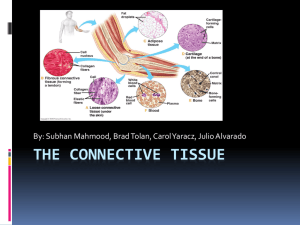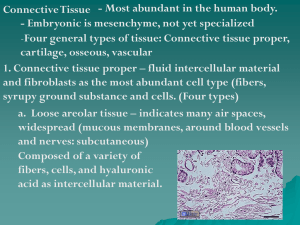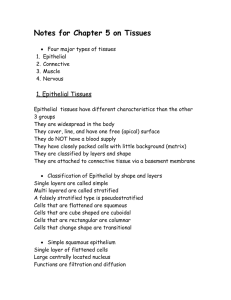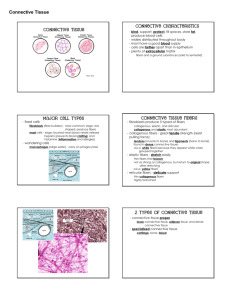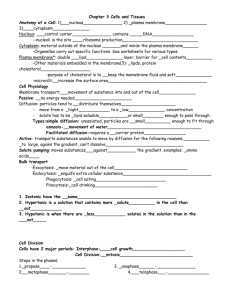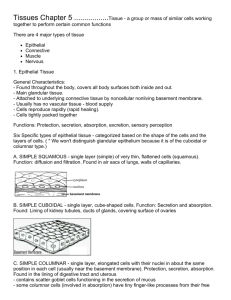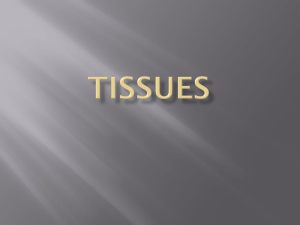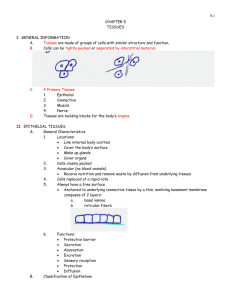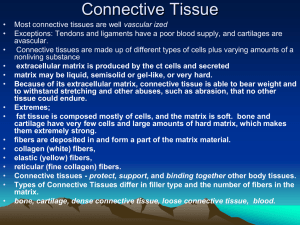Unit 2 Notes 2
advertisement
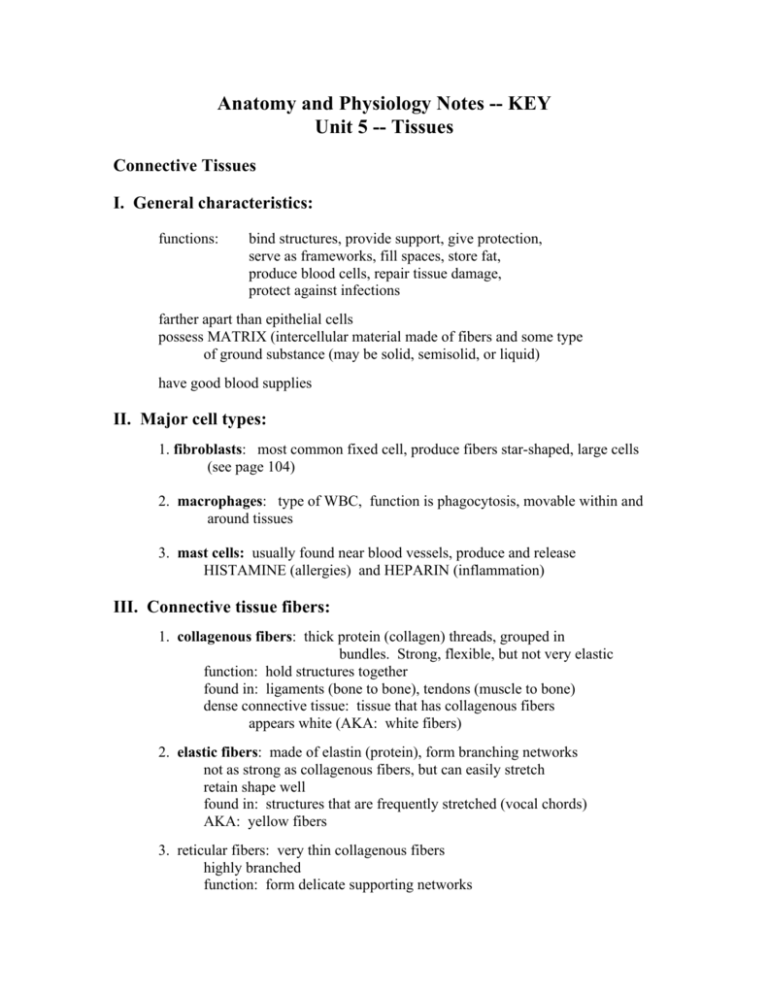
Anatomy and Physiology Notes -- KEY Unit 5 -- Tissues Connective Tissues I. General characteristics: functions: bind structures, provide support, give protection, serve as frameworks, fill spaces, store fat, produce blood cells, repair tissue damage, protect against infections farther apart than epithelial cells possess MATRIX (intercellular material made of fibers and some type of ground substance (may be solid, semisolid, or liquid) have good blood supplies II. Major cell types: 1. fibroblasts: most common fixed cell, produce fibers star-shaped, large cells (see page 104) 2. macrophages: type of WBC, function is phagocytosis, movable within and around tissues 3. mast cells: usually found near blood vessels, produce and release HISTAMINE (allergies) and HEPARIN (inflammation) III. Connective tissue fibers: 1. collagenous fibers: thick protein (collagen) threads, grouped in bundles. Strong, flexible, but not very elastic function: hold structures together found in: ligaments (bone to bone), tendons (muscle to bone) dense connective tissue: tissue that has collagenous fibers appears white (AKA: white fibers) 2. elastic fibers: made of elastin (protein), form branching networks not as strong as collagenous fibers, but can easily stretch retain shape well found in: structures that are frequently stretched (vocal chords) AKA: yellow fibers 3. reticular fibers: very thin collagenous fibers highly branched function: form delicate supporting networks IV. Loose connective tissue: AKA areolar tissue contain large numbers of fibroblasts, matrix is gel-like matrix contains collagenous and elastic fibers function: form delicate, thin membranes in the body found in: membrane that connects skin to underlying tissues (fascia), also found in spaces between muscles found deep to most epithelial tissues, contains many blood vessels V. Adipose tissue: AKA fat function: long-term energy storage, cushioning, insulation formed when: cells store fat in droplets in cytoplasm & enlarge found: under skin, covering many internal organs, spaces between muscles, behind the eyes, around some joints VI. Dense connective tissue: thick, tightly spaced fibers (mostly collagenous and elastic), very few cells (fibroblasts) very strong, can withstand strong pulling forces found in: tendons, ligaments, white part of eye (sclera), deep skin layers VII. Cartilage: rigid connective tissue, cells are called chondrocytes, form framework for body parts not many blood vessels, heal slowly perichondrium (covering of cartilage, has blood vessels) 1. hyaline cartilage: most common, glassy appearance, white, matrix has fine collagenous fibers, found: ends of bones, end of nose, rings in resp passages framework for developing bones 2. elastic cartilage: dense network of elastic fibers found: external ear, parts of larynx 3. fibrocartilage: very tough, many collagenous fibers, serves as a shock absorber found: knees, pelvic girdle, vertebral discs VIII. Bone: -most rigid connective tissue type -hardness of bone is due to calcium salts (Ca phosphate, Ca carbonate) between the cells -matrix contains lots of collagen (gives flexibility & reinforces bone) functions: support of body structures, attachment point for muscles, protection of internal structures, production of blood cells, storage and release of calcium and phosphate IX. Blood: -only connective tissue that is in constant motion -composed of formed elements (cells) which are suspended in a liquid matrix (plasma) cell types: red blood cells, white blood cells, platelets plasma contains: coagulation factors, enzymes, nutrients, water functions: distribution of hormones, gas exchange, delivery of nutrients, removal of waste products, distribution of body heat, protection against infection, repair of injury
